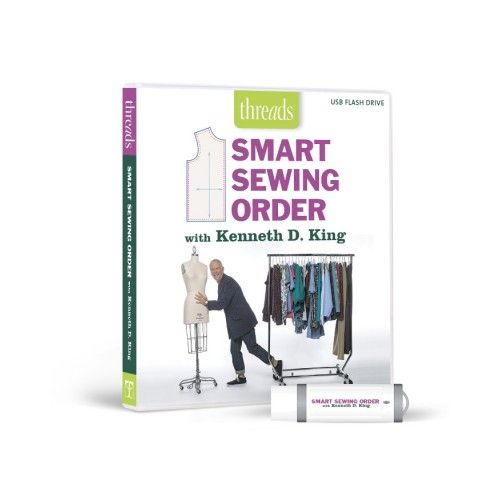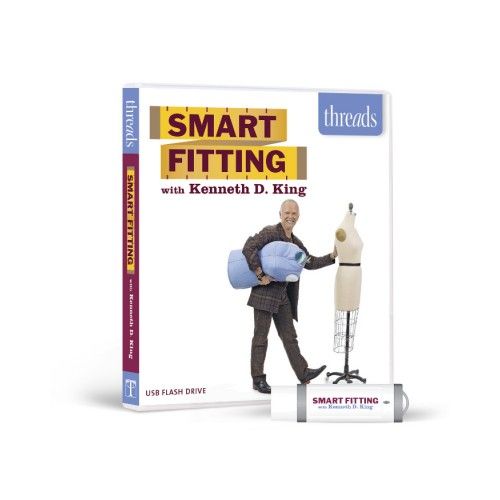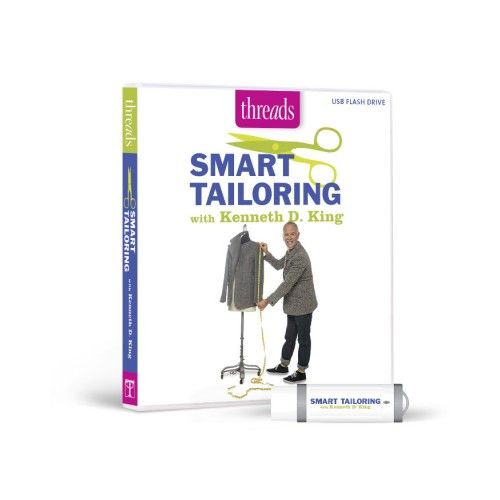Altering patterns for wheelchair users
Hi,
I’m new to this forum, but not new to sewing. I sent a question in to the Threads editors and they pointed me to Gatherings. I’m hoping you’ll be able to offer some advice.
I have a friend who is now in a wheelchair. She has lost mobility in her legs, although she is not paralyzed (she can still feel her legs). I will be doing some sewing for her, but have no experience in altering commerical patterns for wheelchair users. I’m looking for tips, suggestions, and wild ideas. Jeanne is in love with color, texture, and unconventional designs. However, the mechanics of her chair and the new limitations of her body require us to really start thinking differently about what will look stunning and still be functional.
I have contacted a person who sews pants for wheelchair users, and she’s going to sell me a pattern. This is a good start! You might be interested to know (I was!!) that this pattern is shorter in the front rise and longer in the back rise than regular pants. Of course this makes complete sense for permenant sitting. ButI would have never thought of it.
Thanks in advance for your thoughts.
-Kim




























Replies
If that pattern works well I would stick with it and just make variations in fabric. Since your friend won't be standing or walking different pant styles won't mean much. Concentrate on tops and making coordinating pants. Blouses and jackets will probably have to be a bit shorter so there is no length to end up sitting on, or to fold or wrinkle in front.
I would love to know more about this pattern, since it is an issue I dealt with a lot when I worked with wheelchair users. There was never anyone to make customized clothing for those people, so the best I could do was advise what kind of RTW would work best.
I found it at http://www.wheelchairjeans.com (For some reaon the site is down at the moment. Maybe it will be back up by the time you look). The woman in charge is Darlene. I phoned to ask if she sold patterns, and she said she would for $20. So I'm going to get measurements tonight, order the pattern, and get to work on a muslin ASAP.
-Kim
The site was up and I liked what I saw. Thanks for showing it and good luck with your pants. Let us know how they work out.
Kim you did not say exactly what the problem was but after a friend of mine went into a wheelchair one of the things that really helped her as her legs would often get cold was to make slightly enlongated baby quilts that she could throw over her legs. This gives you lots of area to play with color and patterns as well. Also what kind of mobility does she have with her arms? I found with my friend that after some time the spinal column starts to curve and her shoulders became more rounded. Also you will have to allow more for tummy room as this area will be affected as well. I would get those patterns fine tuned and then really play with fabric as well as embellishments that will let her personality shine through as this is the area that seems to be overlooked so often when ones status changes so dramatically. The other question that needs to be asked is- Can she still dress herself or does she need someone to help her do it? Keep this in mind if there is a caretaker dressing her as anything that can be buttoned or zipped after getting her into it and then seated in the wheelchair will be a blessing. Good luck and let us know how it is going.
Good suggestions, thank you! She has all of her upper body mobility, which is great. She needs assistance only with her pants. We're talking about creating a pair of "wrap around" pants that velcro or snap closed. She and her husband love the idea. I'll post pictures when I have some finished garments.
-Kim
Just be careful in placing the snaps or velcro if you do closures down the leg. Check that they aren't in a spot where she will have any pressure against the side of the chair, under her seat, etc.
Hello Kim
I've been a paraplegic since 1957 and took to sewing my own clothes years ago. The altering I did the most was to make generous A-lines out of casual clothes. Getting hems of dresses properly situated under someone paralyzed is just as tricky as putting on pants. A very important consideration is the elimination of all wrinkles, folds, bumps, etc., in the area of the paralysis. I have not tried the following suggestion but after watching Mrs. Christopher Reeve on Larry King a few evenings ago I would venture the hope that there would be help and info at the Christopher Reeve Foundation site.
At 75 years of age and nearly 50 years in my wheelchair, most things become second nature. Sewing quilts is a little tricky , because one of the hands must run the footpedal. But then, what fun is there to life if there aren't a few challeneges.
Importantly, do the things you love to do to the best of your capabilities. Sewing, gardening [just being outside] and the joy of raising our son has helped to keep my spirits high. I will repeat the warning...be careful not to sit on seams, creases, etc. because of the risk of pressure sores.
Any other way I can help,
Kitchee [email protected]
Although it might be a little pricey for just working quilts the D1 by Viking does not have to have the foot pedal plugged in to work the machine. The start button for the embroidery will run the machine without having to hold the button down so except at the very beginning and the end you will be able to use both hands. Just a thought.
This post is archived.